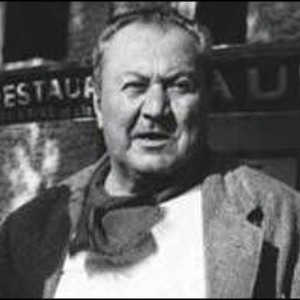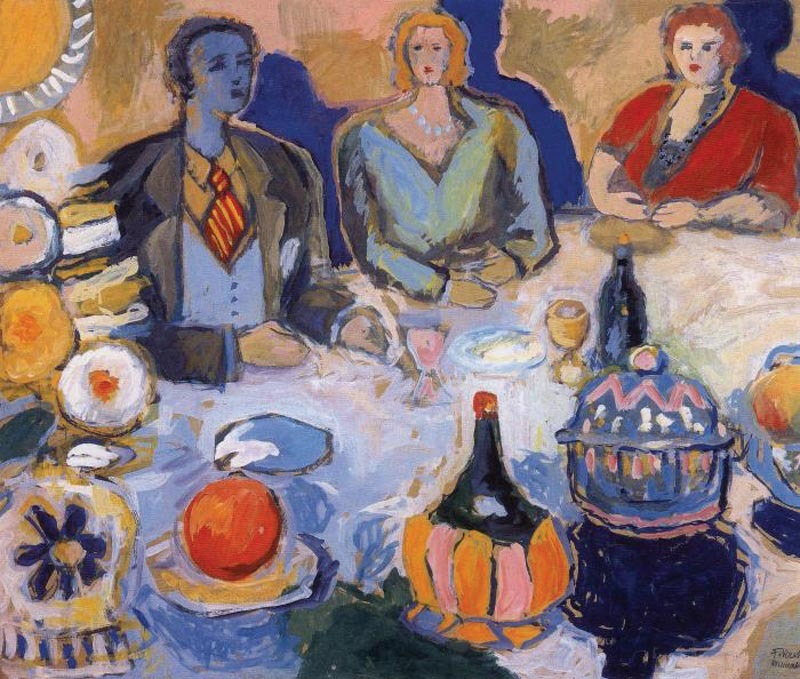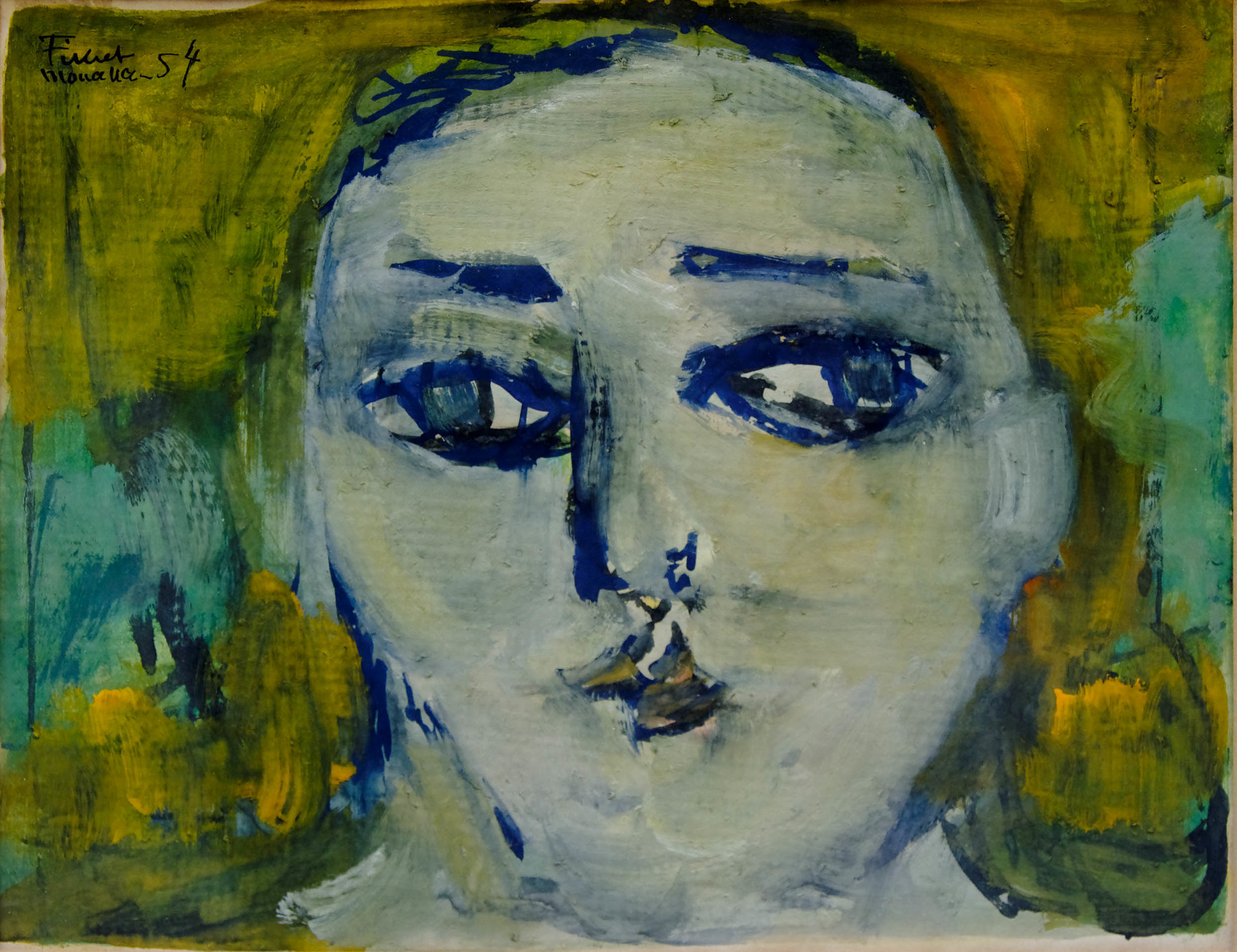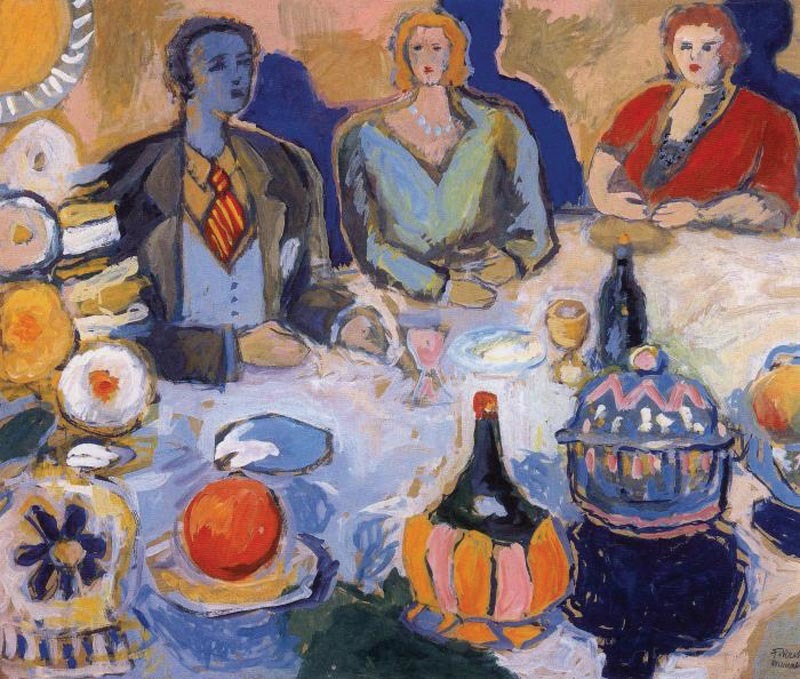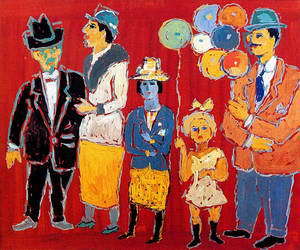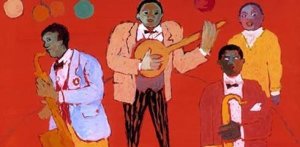Painter (B. 1903,
Istanbul / Moda - D. 19 or 20 Temmuz 1967, Reillanne / France). His full name
is Fikret Mualla Saygı. His father was, Ekrem Bey (Mehmet Ekrem Mualla Saygı),
the sub-manager of Düyun-u Umumiye (Ottoman Administration of Debts), his
mother was Emine Nevber Hanım. During his childhood, he lived around Kadıköy,
Bahariye. He had his education in Saint
Joseph and Galatasaray high schools. He was addicted
to football wityh the influence of his uncle, the football player Hikmet Topuzer.
At the age of 12, when he was playing football at Galatasaray High School,
once he broke his right foot and was crippled, he went through a major trauma.
Upon his mother’s death at a young age because of the Spanish grippe he carried
from school to home, feeling of guilt dominated the life of Fikret Mualla. The
traumas he experienced made Fikret Mualla a nervous and maladjusted person. He
never accepted his father’s marriage. He was sent to Switzerland to study engineering
after completing the Galatasaray.
In Switzerland,
he realized that painting was more interesting than engineering for him. During
his studentship times in Switzerland
when the First World War was continuing, he was totally moneyless. With the support
of Rıza Bey, the consular of the period, he passed to Germany to have
education on painting. He had education on poster and couture from Munich Fine
Arts Academy and then on painting from Berlin Fine Arts Academy. When he was in
Germany,
the financial situation of his father worsened and then he couldn’t send any money,
whereon he was financially supported by Abbas Halim Pasha, the Egypt Khedive.
In Germany,
he became isolated because of his lameness and shyness and was drinking when he
was not painting. He firstly had to receive treatment because of alcohol dependency
in 1928 in
Germany.
After his treatment, he visited the art centers in Italy
and France.
Fikret
Mualla returned to Turkey
in 1937 due to the financial difficulty he experienced as he did not receive
any more money from home. He worked as a painting teacher at Galatasaray High school
from where he graduated and in Ayvalık secondary school for a short time. He was
disappointed about the attention he attracted in the Istanbul art environments and even his works
were despised. He directed his interest to literature for a while. He wrote “Şiller
(Schiller) 1759-1805, Hayatı ve Eserleri” (T.N. “His Life
and Works”) about Schiller, whom he compared to himself (1932). His stories
“Usera Karargahı” and “Masal”, which were published in magazine Ses
in 1938 are the products of him as a man of letters.
During that
period, Mualla earned his living by drawing stage costumes and illustrating
books. He moved to Beyoğlu district also because of his interest in Semiha Berksoy, the soprano of Istanbul Şehir Tiyatrosu (T.N. Istanbul City
Theater). He drew the costumes of the operettas performed onstage at Istanbul Şehir Tiyatrosu like
“Lüküs Hayat”, “Deli Dolu”, “Saz Caz”.
He illustrated the articles in the magazine Yeni Adam of İsmayıl
Hakkı Baltacıoğlu. He also published the portrait designs and cartoons of the
artists of the period in the same magazine. He illustrated the books, Varan
3 and Benerci Kendini Niçin Öldürdü? of Nâzım Hikmet. He continued
painting and painted landscape pictures of several cities of Istanbul. He opened his first exhibition in 1934
containing watercolor paintings and designs.
During his Istanbul times, art enthusiast
Salah Cimcoz allocated him a comfortable working place in his mansion in Moda.
In this house, he was giving painting lessons to three children of Cimcoz (one
of them was Emel Hanım, which would be the wife of the President Fahri
Korutürk). However, upon a dispute with Salah Cimcoz while Fikret Mualla was
drunk, he went to the mansion and destroyed all portraits he was working on. He
was subject to inquisition and prosecuted because of his improper sentences
about the statesmen whose portraits he was drawing. His police phobia, which
would not leave him throughout his life, started. After this event (1936), he was
hospitalized in Bakırköy Ruh ve Sinir Hastalıkları Hastanesi (T.N. Bakırköy
Psychiatric Hospital) for
one and a half year. In this hospital, he was under control of the famous
doctor Mazhar Osman and roommate of Neyzen Tevfik.
In 1938,
Fikret Mualla inherited a big heritage upon death of his father. He decided to
move to Paris
after selling his assets. Before he went, he painted about thirty pictures asked
by Abidin Dino on Istanbul,
to be exhibited in the Turkish pavilion at 1939 International New York Fair. In
the same year, some of the designs he has drawn for magazine Ses were found smutty and he was sued. Fikret
Mualla, who was among the first generation painters of the Republic, after his
acquittal, went to France,
where he would live for twenty six years.
When he went
to France,
expressionism was on the agenda, of which painters like Edvard Munch and
Wassily Kandinsky were the representatives. Fikret Mualla was influenced by
this approach too. Fikret Mualla, who lived an entertaining, luxury life for a
short period in Paris, entered into hard times
together with the beginning of the Second World War and the occupation of France. It is
said that, during that times, he undersold his pictures in order to meet his
daily needs. Because of the problems he experienced due to alcohol, police
phobia and longing for home, he was hospitalized a few times. Fikret Mualla was
trying to overcome the problems by painting and drinking. He fell in love with
his painter friend Hale Asaf from Germany but without being
reciprocated. During his hospital times, he didn’t suspend painting. His
subsequent life continued under the protection of several art enthusiasts.
Fikret
Mualla was saved by Dina Vierny, to whom he was drawing pictures, during his
hospital days. In 1954, he opened his first exhibition in Paris with the paintings he made there. He
had not collectively exhibited his works anywhere for 25 years. Until that
date, those who wanted to buy his works, were finding them at Paris cafes and generally getting them at a
bargain price. Two painting brokers organized his first exhibition. His works
attracted great interest in the exhibition and all of them were sold. The
painting brokers defrauded him by not giving the money they promised, but that
exhibition magnificently introduced the artist to the Parisian art
environments, ensured him to be known as the “Painter of Paris”. He met many
renowned artists and attracted Picasso’s interest. He opened his second
exhibition two years later and was hospitalized once more after the exhibition.
After his discharge, he made an agreement with industrialist Lhermin. Within
the same period, he met Madam Angles, who was a continuous buyer of his
pictures.
Mualla made
paintings with the Paris theme and gradually
gained a reputation in Paris.
His works started to be collected by collectors. But he couldn’t establish an
organized life. The care of the artist, who was paralyzed in 1962, was undertaken
by an art enthusiast Madame Fernande Angles, whose husband was the senator of the
Alps region. Madame Fernande Angles, who was
the wife of Raguel Angles, brought him to her farm in Reillanne accompanied by
a caregiver. He produced many works in this farm for Madam Angles until his
death in 1967. He was put in a clinic after nervous breakdowns in May 1967. He
was found dead on July 20, 1967. He was buried in the Paris cemetery of the nameless.
Due to his
unsteady and bohemian life style, not only his art but his life too passed into
the history of painting virtually as a mythology. According to his will, his
remains were brought to Turkey
in 1974. Since he had delivered painting lessons to Emel Hanım, the wife of the
President Fahri Korutürk, during her childhood and so the President Fahri Korutürk
took care of him, his bones were brought to Istanbul
and were buried at Karacaahmet
Cemetery.
Fikret
Mualla painted in order to be happy and to forget everything. For this reason,
he wasn’t influenced by various movements in the world of arts, he created his
own style in his paintings following his intuitions and he painted lyrical
pictures. He didn’t reflect his ill-tempered, uncompromising personality and
unhappy life to his paintings; he made paintings full of the joy of living.
Mualla, who loved to draw cities, integrated the people, streets, cafes,
cirques, bordellos and fishermen of Istanbul and
Paris into his
paintings. The artist, who liked playing with the colors, was known to be impressed
very much from Henri Matisse’s use of colors. However in any case, was an
important representative of Turkish painting in Paris, where most of his life passed and he made
himself accepted within the limitless art environment of that city.
He generally
made his paintings on colored background papers using gouache paint. He also
used watercolor and pastel materials frequently in his paintings. It is known
that, the works of Fikret Mualla, whose recognition in Parisian art environment
took up some time, were praised by Picasso, moreover he bought one of Fikret
Mualla’s paintings, and presented Fikret Mualla one of his works and Fikret
Mualla sold it for one bottle of raki. Among the outstanding works of Fikret
Mualla are “Sitting Men”, “Cafe”, “French Workers at a Café in Marseille”, “The
Golden Horn and Süleymaniye Mosque”, “A
Street in Paris”,
“Balloon-Seller”. “Fisherman”.
His
paintings, which were put up for auction after his death, were bought by the Turkish State
and a Fikret Mualla Hall was founded in the Ankara Resim ve Heykel
Müzesi (T.N. Ankara State
Museum of Painting and Sculpture). In
1976, an exhibition in Ankara
involving one hundred and eighteen paintings collected from his friends, his
relatives and various collections was arranged for his name. Today, most of his
works are in private collections. There is an association called “Fikret
Mualla’s Friends Association” in Paris.
